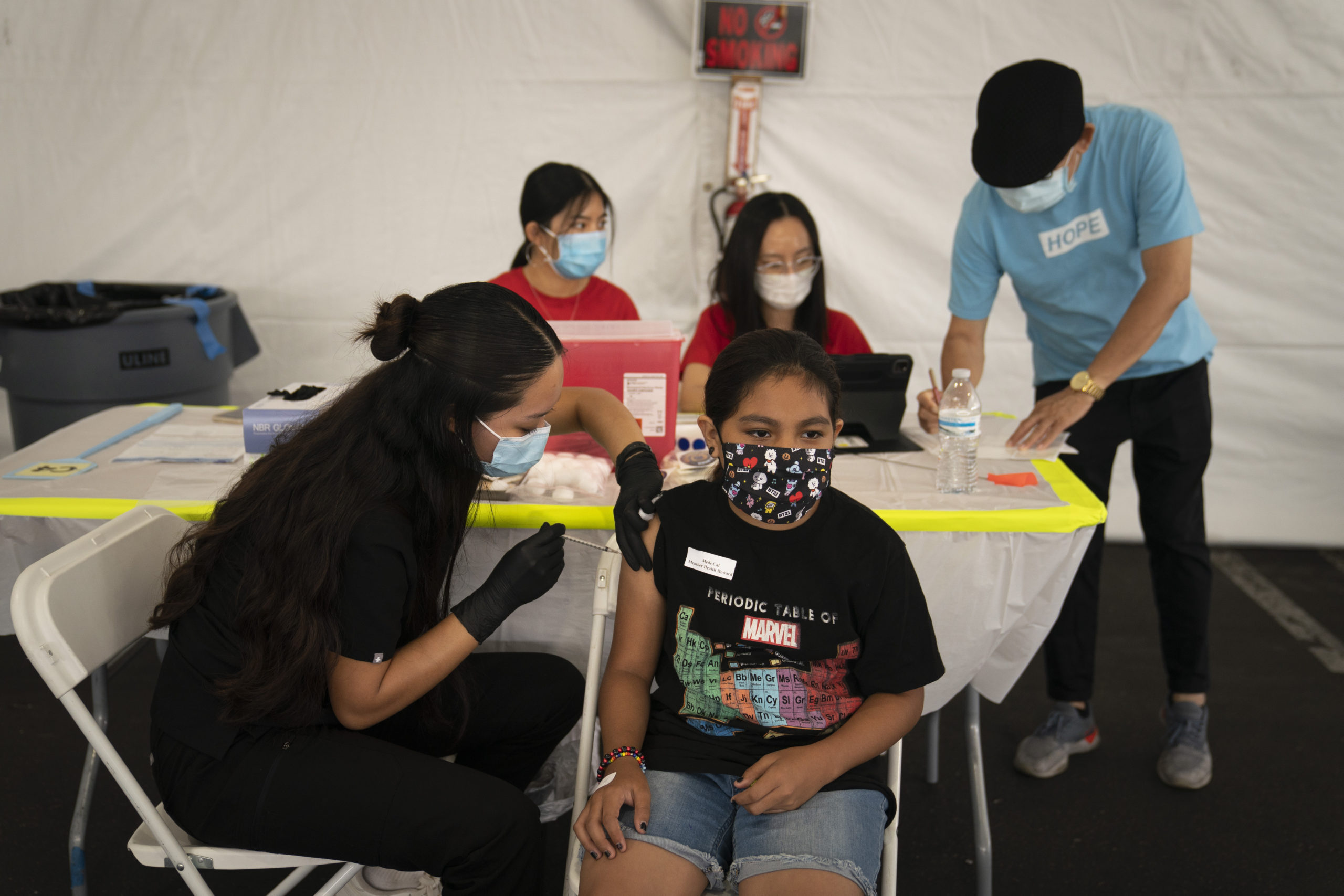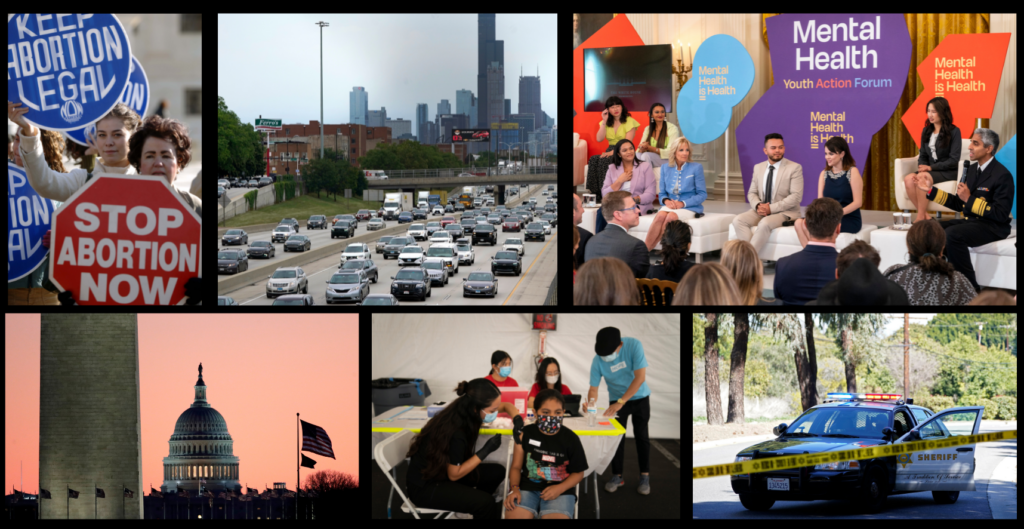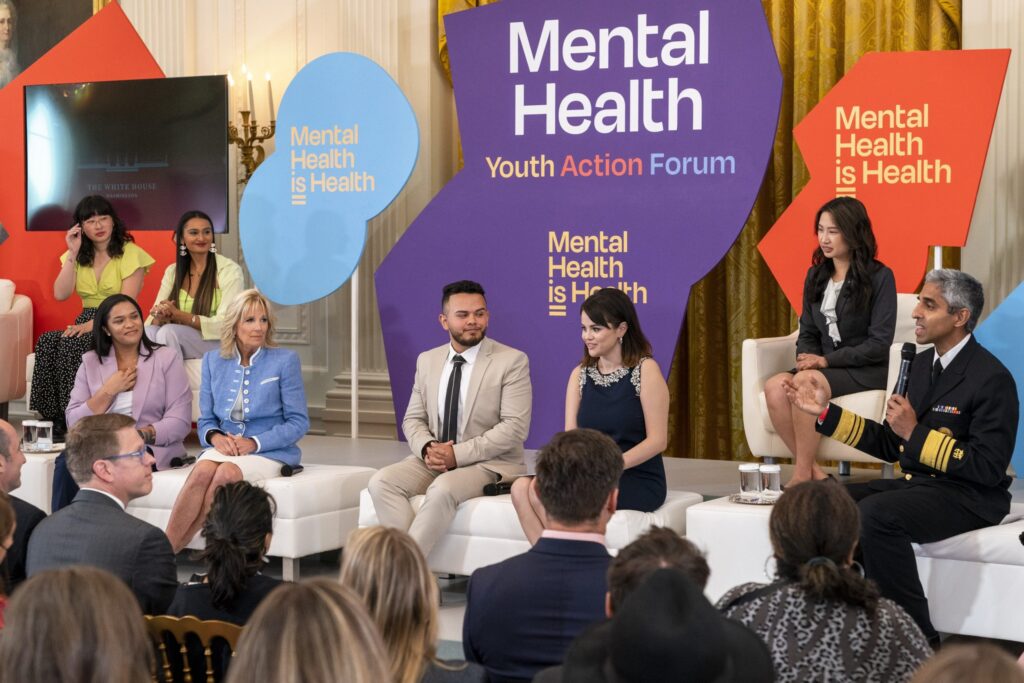
FILE - In this Aug. 28, 2021, file photo, Mayra Navarrete, 13, receives the Pfizer COVID-19 vaccine from registered nurse, Noleen Nobleza at a clinic set up in the parking lot of CalOptima in Orange, Calif. With more than 40 million doses of coronavirus vaccines available, U.S. health authorities said they're confident both seniors and other vulnerable Americans seeking booster shots and parents anticipating approval of initial shots for young children will have easy access. (AP Photo/Jae C. Hong, File)
As the public navigated the COVID-19 pandemic from its onset in 2020, practical information related to COVID-19 played a central role in media coverage. The Media Insight Project survey offers a lens to see the demographic breakdown of Gen Z and Millennials who are most closely following this information in 2022, and in what ways. Twenty percent of those ages 16 to 40 say it is the “news you can use” topic they follow most closely. This section examines their news behaviors.
Those most closely following news related to COVID-19 are widely diverse, but are more likely to identify as Democrats
Overall, Gen Z and Millennials who say information related to COVID-19 including the state of the pandemic, restrictions, or policies is the “news you can use” topic they follow most often are similar across ages, races and ethnicities, gender, education levels, and types of communities.
However, Democrats are more likely than Republicans and independents to most often follow news about COVID-19 with six in 10 identifying as Democrats and about 4 in 10 as either Republicans or independents.
Many Gen Z and Millennials follow news about COVID-19 daily, but the frequency of consumption varies by age, geography, and education
Among those who say information related to COVID-19 is the “news you can use” topic they follow most often, 62% of Gen Z and Millennials reported following the news at least daily when the survey was conducted in May and June of 2022. However, there is significant variation among age, geography, and education when it comes to getting news at least daily about it.
Older Millennials who follow it most closely are more likely than both younger Millennials and Gen Z to consume information related to COVID-19 each day.
Geography is also a factor — Americans ages 16 to 40 living in urban and suburban areas are more likely to consume COVID-19 information daily compared with those living in rural regions.
There is also variation when it comes to education level, as college-educated Gen Z and Millennials who follow it most closely are more likely to consume news related to COVID-19 than those without a college degree.
Facebook is the most-used social platform by Gen Z and Millennials who most often follow COVID-19 information
Over a third of Gen Z and Millennials who say they most closely monitor COVID-19 information report using Facebook the most to get this news including information about mask mandates, vaccines, and guidelines. While Facebook is more than twice as popular as any other social media site for news about COVID-19, more than 1 in 10 each use YouTube, Twitter, or Instagram.
Close followers of information related to COVID-19 get it from many social media accounts
Gen Z and Millennials get COVID-19 information from many types of social media accounts. About a quarter of those who closely follow the topic use accounts from national TV networks, national or international newspapers, media organizations that cover a single topic, local TV stations, local news organizations, and individuals they do not know personally. There is a wider range of social media accounts used to get COVID-19 information than other topics and no single type of account dominates.
Local and national TV are the most commonly used traditional sources of information among close followers of COVID-19
When it comes to traditional news sources that Gen Z and Millennials most often turn to for COVID-19 information, local and national TV are the most common. While other popular topics see a predominance of either local or national TV, it is notable that both television sources top the list for COVID-19 information. Search engines and national newspapers are also frequently used sources for news about COVID-19 among those who closely follow it.
Continue reading: Information related to health or mental health
Share with your network
Knowing the news: How Gen Z and Millenials get information on essential topics
You also might be interested in:
As research continues to inform this slice of the news industry, we’ll continue learning, too. Who gets to be called a journalist in 2025 and beyond? What is the future of trustworthy information, especially considering the access to and trust for online content creators? How might journalism adapt to the rise, or co-opt the styles, of news influencers?
What if we started looking at our output as a product, not a service? Too often, we think "product" means a fancy app or a new website. But product isn’t about tech. It’s about intention.
When we began asking what kind of stories still mattered to Baca County, we realized many of them weren’t “breaking news” but generational memory. And the paper was the last remaining platform that treated those memories with care and context.















